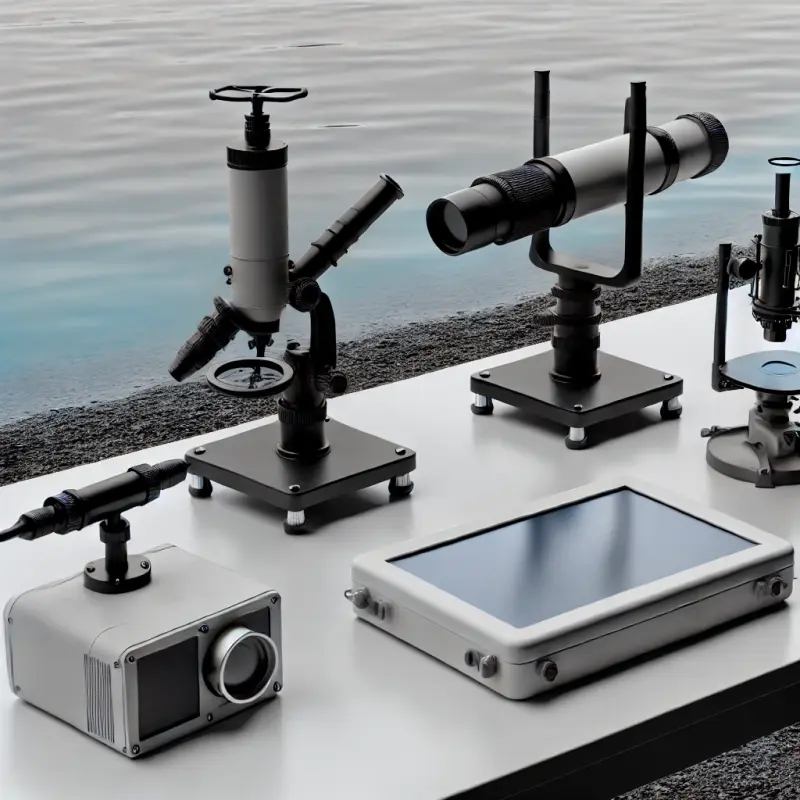Rare Devices for Studying Marine Ecosystems: How Technology Assists Biologists and Oceanographers
The vastness and complexity of the world's oceans present significant challenges for scientists striving to understand marine ecosystems. Advancements in technology have equipped biologists and oceanographers with specialized tools to explore these environments more effectively. This article delves into some of the rare and innovative devices that are transforming marine research.

1. Autonomous Underwater Vehicles (AUVs)
AUVs are self-propelled, untethered robots designed to navigate underwater environments autonomously. Equipped with sensors and cameras, they collect data on water temperature, salinity, and other oceanographic parameters. Their ability to operate without direct human control allows for extensive mapping of the seafloor and monitoring of marine life in previously inaccessible areas.
2. Remotely Operated Vehicles (ROVs)
ROVs are tethered underwater robots controlled by operators aboard a vessel. They are equipped with high-resolution cameras, manipulator arms, and various sensors, enabling detailed exploration of deep-sea environments. ROVs have been instrumental in studying hydrothermal vents, shipwrecks, and deep-sea species, providing insights into ecosystems beyond the reach of human divers.
3. Biologging Devices
Biologging involves attaching miniature data recorders to marine animals to monitor their movements, behavior, and environmental interactions. These devices collect information on diving depth, temperature, and location, offering valuable data on species' habits and migration patterns. For instance, tagging sea turtles with biologgers has revealed critical nesting sites and migration routes, informing conservation strategies.
4. Acoustic Monitoring Systems
Acoustic technologies are essential for studying marine life that relies on sound for communication and navigation. Hydrophones, underwater microphones, detect and record sounds produced by marine organisms, such as whale songs and dolphin clicks. Analyzing these recordings helps scientists understand species distribution, behavior, and responses to environmental changes.
5. Environmental DNA (eDNA) Sampling
eDNA sampling involves collecting water samples to detect genetic material shed by organisms into their environment. This non-invasive method allows researchers to identify species present in a particular area without direct observation or capture. eDNA has been pivotal in monitoring biodiversity, detecting invasive species, and assessing ecosystem health.
6. Satellite Remote Sensing
Satellites equipped with remote sensing technology provide large-scale observations of oceanic conditions. They monitor sea surface temperatures, chlorophyll concentrations, and ocean currents, offering data crucial for understanding climate change impacts and marine productivity. Satellite imagery also aids in tracking algal blooms and assessing coral reef health.
7. Autonomous Surface Vehicles (ASVs)
ASVs are unmanned boats that operate on the ocean's surface, collecting data on water quality, meteorological conditions, and marine life. They can be deployed for extended periods, covering vast areas without human intervention. ASVs have been used to monitor fish populations, map seafloor habitats, and study ocean-atmosphere interactions.
8. Underwater Gliders
Underwater gliders are buoyancy-driven vehicles that glide through the ocean, collecting data on physical and chemical properties. They are energy-efficient and capable of long-duration missions, making them ideal for monitoring oceanographic parameters over time. Gliders have contributed to understanding ocean circulation patterns and detecting changes in water masses.
9. Benthic Landers
Benthic landers are platforms deployed on the seafloor to study benthic (bottom-dwelling) organisms and processes. They are equipped with cameras, sensors, and sampling devices to monitor environmental conditions and biological activity. Benthic landers have provided insights into deep-sea ecosystems, including nutrient cycling and species interactions.
Emerging Technologies and Future Prospects
As technology advances, new innovations continue to emerge in marine research. One promising area is the development of underwater artificial intelligence (AI). These AI-driven systems can analyze vast amounts of environmental data in real time, identifying patterns and anomalies that would be difficult for humans to detect. Additionally, biodegradable sensors are being designed to reduce pollution, providing eco-friendly options for long-term ocean monitoring and ensuring minimal impact on fragile marine habitats.
Conclusion
The integration of these advanced technologies has revolutionized marine research, enabling scientists to explore and understand ocean ecosystems with unprecedented precision. As technology continues to evolve, it will further enhance our ability to monitor, protect, and sustainably manage the world's oceans.
Artykuły
Zapisz się do naszego newslettera, aby najnowsze i najciekawsze treści trafiały prosto do Twojej skrzynki mailowej!